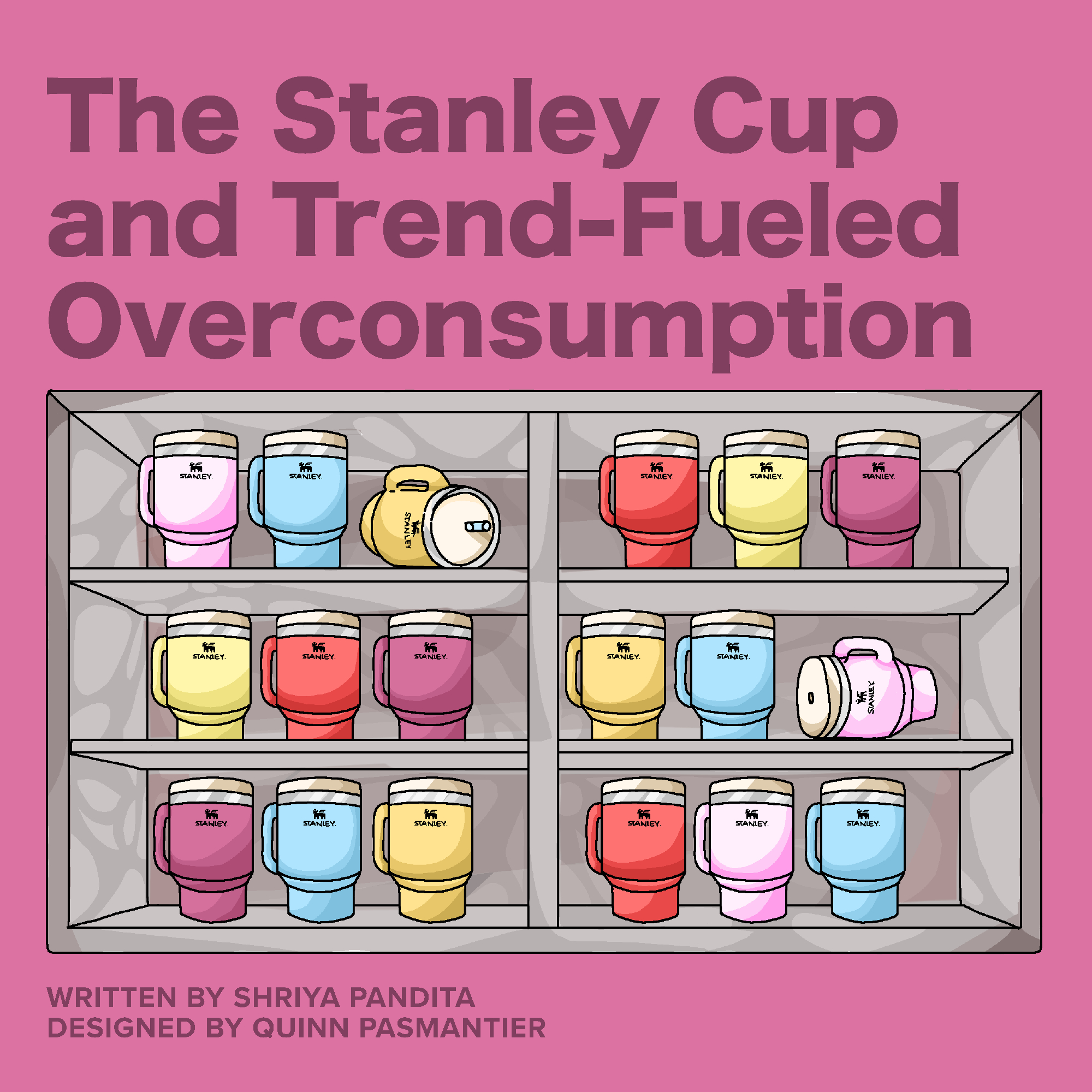
As 2023 unfolded, who would have possibly thought that a water bottle would become the must-have item, outstripping supply and sparking frenzy? Stanley, the brand behind the sensation, left us all in awe. Was it the bottle’s charm, the high price tag marking it as a trophy or the magnetic pull of influencers that made it trend number one? This unexpected star proves that sometimes, it’s not just about the product, but the story it carries into the whirlwind of social media fame where every day there is a new thing everyone has to get their hands on.
The Stanley Quencher underscores the cultural shift toward overconsumption generated by social media platforms. Every day, new products are launched into the limelight, not necessarily for their utility but for the social status they bestow upon their owners. Influencers, having considerable power over consumers and their preferences, advertise these items, making them must-haves for their followers. The Stanley water bottle, with its price and aesthetic appeal, became more than just a bottle for hydration; it symbolized a lifestyle, a badge of honor among those who could claim ownership. This trend reflects a growing pattern of consumption where the value of goods is increasingly measured by their visibility and desirability in the digital world.
The craze even reached new heights on TikTok, where users didn’t just flaunt their bottles but transformed them into personalized accessories. Enthusiasts started purchasing mini pouches, sanitizer holders and even bespoke lip balm slots to adorn their bottles with. This customization turned the Stanley Quencher into a fashion statement that had to go viral, leading to the desire to not only own the bottle but also the myriad of accessories that could accompany it.
There are several accessories making people go crazy! An attachable snack holder that keeps your favorite munchies — like crunchy popcorn, chewy gummies or fresh fruit slices — handy for those on-the-go cravings. Then, there are the holder straps, not just any straps, but ones that are carefully selected to match each Stanley’s color, further turning it into a fashion statement. And for those who love a bit of extra utility, some straps come with a mini pouch — imagine having a cozy nook for your phone, wallet or lip balm right on your water bottle. The perfect essentials kit, all wrapped around your hydration buddy. But what truly stands out is the creativity seen in accessories like a key attacher for convenience, or a cup holder designed to keep your bottle pristine and free from scratches.
This surge in demand for trending items raises questions about the sustainability of such consumption habits. The craze over Stanley, while great for the brand’s sales, also highlights the environmental and economic implications of chasing after the latest trends. Manufacturing, shipping and the eventual disposal of these products contribute to environmental degradation, making us question the ethics behind the relentless pursuit of the newest, trendiest items.
As soon as this trend dies, Stanleys will take up space permanently in the back of cupboards like other bottles that were once trending like the Hydro Flask. The Hydro Flask rose to fame during 2019 for its sleek design and vibrant colors. Its popularity was further fueled by enthusiasts who personalized their bottles with stickers and bracelets, transforming them into unique expressions of their identity and interests. Moreover, the high price tag of these goods often makes them inaccessible to the average consumer, resulting in issues of inequality and social division based on access to luxury items.As the dust slowly starts to settle on the Stanley cup craze, it leaves us with more than just a trendy water bottle; it offers a moment of reflection on our relationship with consumption in the current digital era. While highlighting the power of social media to dictate trends, it also gets us to think more deeply. Why do we possess what we do, and at what point does owning the latest trend convert into overconsumption? The Stanley phenomenon, with its highs of viral fame and lows of environmental concerns, is one such example. It’s our responsibility to balance our desires with awareness, ensuring that our enthusiasm for the new doesn’t overshadow the importance of sustainability and meaningful consumption. In the end, it’s not just about a water bottle; it’s about understanding the impact of our actions in a connected world and striving for a future where trends and responsibility can coexist.